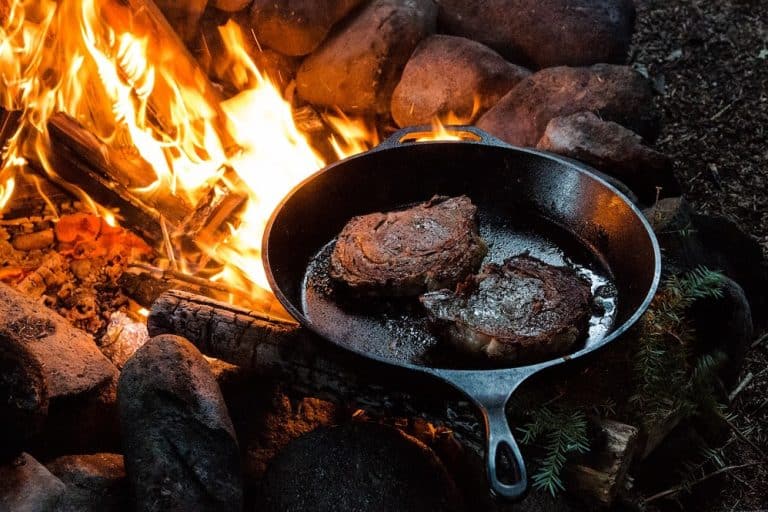When Does Food Get Spoiled?

Ever felt disheartened by the sight of black mold on the bread you had kept for breakfast toast? That sadness in smelling the bad odour of potato curry you had parcelled for dinner on a train journey. Seeing the milk for your bed coffee curdle upon boiling. The answer is invariably a Yes in all cases. For food spoilage is trouble we all face in all our everyday lives.
Food is said to be spoiled when it is no longer safely edible as it gets contaminated by bacteria and other germs. When food items are kept unpreserved or open for a certain period of time, germs break down the food components. This changes their colour, flavour, texture, taste, odour, and nutritional value.
Food getting spoilt is neither an accident nor a rarity. It is a commonly occurring natural phenomenon that involves microscopic germs that live around us. But we cannot simply leave our food to be just spoilt by these germs as they like it. In fact, there are a number of effective measures we can use to prevent our food from getting spoilt. But, before that, we should be able to spot food spoilage. And here’s how.
How to Spot Food Spoilage?
As we said above, food spoilage is generally noticed by the alteration in the colour, flavour, texture, and odour of the specific food item. When food items deteriorate by the action of microscopic germs, they usually develop an unpleasant smell or taste. In other cases, there is a visible change in the colour or texture of these items.
As far as packed or canned food products go, we generally rely on the expiry date to determine whether a particular product has become spoiled. However, expiry dates are only an indicator of the time period in which a food item is in its optimal state or best quality and thus cannot be regarded as having the final say in deciding whether we should consume that food item or not. Besides, when it comes to food we have cooked, there is no expiry date to tell us when exactly it will get spoiled. One may then wonder as to what we should then trust upon in such cases. The answer is simple: trust your senses.
By relying on your senses of sight, smell, and taste, you can very easily be a culinary detective in spotting spots of spoilage in your food items. Below listed are some of the common ways in which your senses can detect food spoilage.
Mold
Mold is one of the most easily spotted signs of food spoilage as it is seen in the form of coloured patches over the surface of food items such as bread loafs, fruits, vegetables, dairy products, and meat foods. Mold first appears as small spores on the surface of foods and grows rapidly in course of time.
Although mold is considered an easily-spotted sign, it is quite tricky as well. Because in some cases, mold may appear not on the surface but on the underside of packed food products. Therefore, it is wiser to check the bottom of glass jars and plastic containers to spot the mold hiding out there.
Slime
You might have come across situations in which you see that there is a glossy or slimy sheen on the surface of food items such as roasted meats or vegetables. Well, the appearance of slime is a sure indicator of food spoilage and you can certainly toss them out without any second thoughts. Spoiled fish also will have a slimy flesh and slippery sheen on the surface.
Colour Change
It is mostly in the case of green vegetables that the change of colour indicates food spoilage. Generally, green vegetables such as broccoli or kale turn yellow while some vegetables turn into brown or darker colours when they deteriorate. Many of these green vegetables can be preserved from spoilage by putting them in icy cold water. However, there are vegetables that cannot be salvaged this way either. For instance, if potatoes turn green, it means they are spoiled and consumption of the same can make you sick. Tossing them out is the best option you have.
One important thing is that a change in colour doesn’t necessarily indicate food spoilage in all cases. There are fruits and vegetable which changes their colour when exposed to air but retain their quality nonetheless. Avocado is a common example; they lighten their colour without altering their taste or nutritional value.
Similarly, when meat is taken from the refrigerator and put in the open air, it changes colour. This doesn’t mean that the meat has become inedible. You can cook and consume discoloured meat, provided there is no slime on the surface of it.
Bad Odour
When everything on the surface seems very normal – be it the colour or texture – take a sniff test to make sure that your food is not spoiled yet. While taking a whiff is not the most pleasant way to test food spoilage, the presence of a pungent or rancid smell can guarantee you that the food item is not safe for use. Remember, it is not just milk that emits a rancid smell when it is spoiled. Even fruits and vegetables can smell very different when they are spoiled.
Odd Texture
The change in texture is a common indicator of spoilage in the case of fruits and vegetables. When fruits and vegetables become squishy, concave, grainy or wrinkled, it is better to throw them into the garbage. While juicy fruits become squishy on spoilage, hard vegetables become soft when they are spoiled.
Dairy products also have a change in texture when they are spoiled. If you find your milk products chunky or your cheese to be soggy, it is healthier not to use them.
Importantly, when it comes to fruits like bananas and apples that are browned and softened, you can still use them in bakes products. In fact, it is this browned version of these fruits that work better in baked forms.
Frost and Package Damages
In the case of frozen food items, the appearance of excessive frost can be an indicator of food spoilage. While the appearance of unnecessary ice can be the result of mild freezer burn and can, therefore, still be consumed, it is always safer to double-check such frozen products. However, if you find the package of such product ripped or damaged, discard such product because signs of package damage is a sure indicator of bacterial infection of food items contained in them.
Canned Food
Although canned foods are usually made with precautions against spoilage, there are still situations of canned foods getting spoiled and you can spot such spoilage from the damaged lids or bulging surface of the cans. You can also, at times, notice bubbles rising upwards inside the jars, which is commonly referred to as gassiness. Apart from these visible markers, you can also notice spoilage from the bad or strange odour coming from them.
Spoiled canned foods are dangerous because they can cause fatal health issues like botulism. So, when in doubt, throw them out – that’s the best strategy in the case of spoiled canned foods.
Floating Eggs
One easy way to spot decayed eggs is to test whether or not they float on water. If the eggs get drowned, they are safe for use. If they float on the surface, it means they are not fresh but spoiled. The science behind this is that eggs intake air through its porous shells; the older the egg is, the larger the amount of air inside. Well, a little bit of science is of great assist to the culinary detective in you.
Puddling or Souring
While this may not be the commonest of food spoilages you might notice in your kitchen, it is better to be aware of the warning signs food items like hummus or yogurt give you. If your hummus or other dips develop a sour taste, you can toss them out. Similarly, if you find your yogurt beginning to puddle with excessive liquid content on the surface, note that the yogurt is past its prime.
What Causes Food Spoilage?
Food spoilage occurs through the action of microscopic germs like bacteria. Such bacteria are commonly referred to as spoilage bacteria. This spoilage is facilitated by factors such as enzymes, air, temperature, time duration etc.
If food items are kept in the open for a long period of time, it enables the rapid growth of germs that break down the food. There are some naturally occurring enzymes in food items that facilitate the growth of bacteria. Additionally, the excess moisture content in the food also acts as a conducive situation for the multiplication of spoilage bacteria.
Are Spoiled Foods Harmful?
Consumption of spoiled food can cause mild to severe health issues. According to World Health Organization (WHO), there are more than 200 kinds of foodborne diseases that are caused by the contamination of food by bacteria, germs, and chemicals. Certainly, not all of these are caused by spoiled food, but some are.
Spoiled food can cause stomach upset, irregularities in bowel movement, and other gastrointestinal issues. While occasional consumption can cause only mild health issues, continuous consumption can prove to be fatal at times. A noted example is Botulism caused by bacteria found in canned foods.
How to Stop the Spoilage
From salting and sweetening to freezing and dehydration, there are a number of conventional as well as modern means to prevent your food items from getting spoiled. They are as follows:
Refrigeration and Freezing
We all put different kinds of food items in refrigerators to prevent them from getting spoiled quickly. This is because the cold temperature inside the refrigerator is well below the conducive temperature required by bacteria and other germs to multiply. While refrigeration can keep your food items fresh for a few days, it can’t keep the food safe for a longer duration of time.
If you want to remove all possibilities of bacterial growth, it is advisable to put them inside the freezer as the temperature inside the freezer is much colder than in the other parts of the refrigerator. If you take care to remove the presence of air inside packed foods kept in the fridge, it can stay for a longer period than usual.
Canning
Food items like fruits, nuts, vegetables, processed meat et cetera can be preserved using the method of canning. In this method, the air is removed from the food items and are kept in airtight cans so that germs do not grow in them.
In some cases, the food is boiled before it is canned so that there won’t be any bacterial presence in the cans. It is important to make sure that the food is properly processed before canning because canned foods are very vulnerable to a deadly bacterial toxin called Botulism.
Dehydration
Dehydration is a preservation method in which the moisture content is removed from the food items to prevent the growth of spoilage bacteria. In the conventional style, food items are dried in the sun to remove the moisture content. Dried fruits, vegetables like red chillies, raw fish, and potato chips are dehydrated using this method.
You can dehydrate food material using modern technology as well. What you need is low humidity and a heat source to dehydrate food. You may either use an oven set with the door open or an actual dehydrator. In either case, the food has to be dehydrated at a temperature level of around 140F.
An added advantage of dehydration is that it not only keeps the food edible for a longer period of time but it also makes the food items smaller and lighter so that we can store and transport them conveniently.
Salting and Sweetening
Though they both taste entirely different, salt and sugar share a common advantage when it comes to preventing food spoilage. We add salt to food items like dried fish and pickles to preserve them for a longer period. Similarly, excess sugar can act as a preservative in the case of food items such as jams, jellies, and other sweets. Apart from salt and sugar, we also use natural preservatives like vinegar to halt food spoilage.
Boiling
Boiling is a common method we use in our everyday life to keep food from getting spoiled. For instance, when milk is boiled and then cooled down quickly, the germs in the milk are killed and thus milk is kept fresh for a longer period. This process in the case of milk is also known as pasteurization.
Conclusion
Having gone through the different ways in which food gets spoiled and the different methods of spotting them and preventing them from happening, we can say three things for sure. Food spoilage is a common reality in our daily life. But it is a reality that we can check and control via the use of simple but wise methods. Finally, if you still feel that the food might be spoiled, remember- when in doubt, better throw it out. Staying healthy is all that matters.






